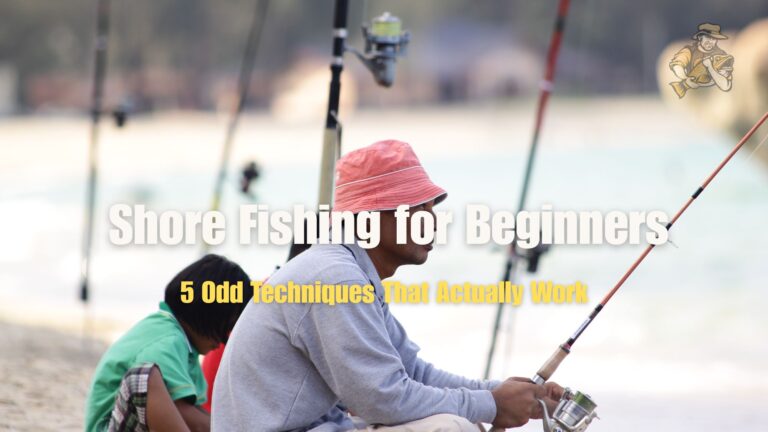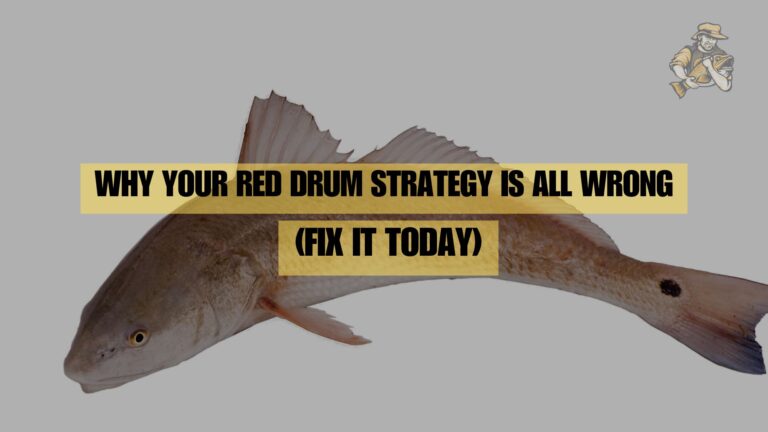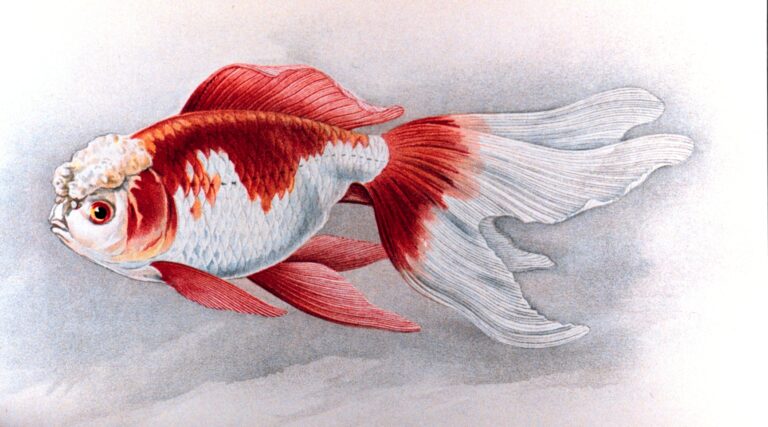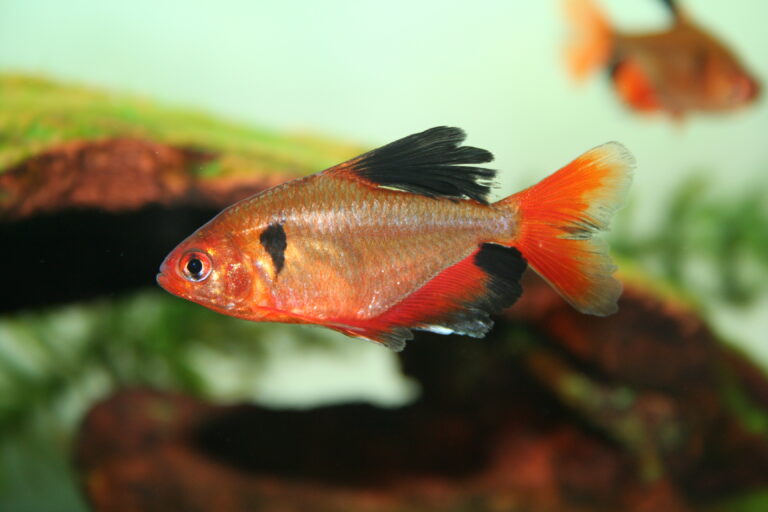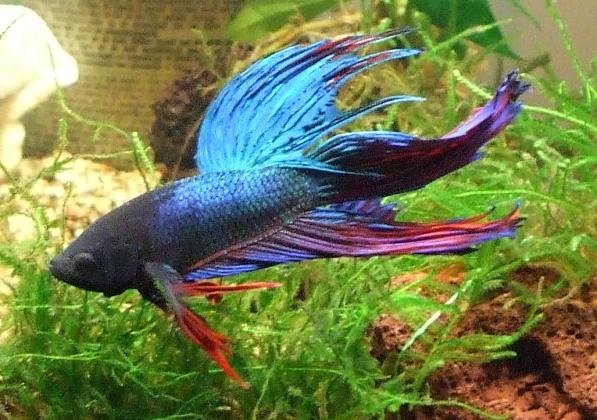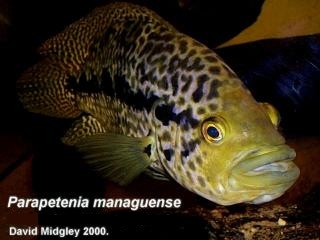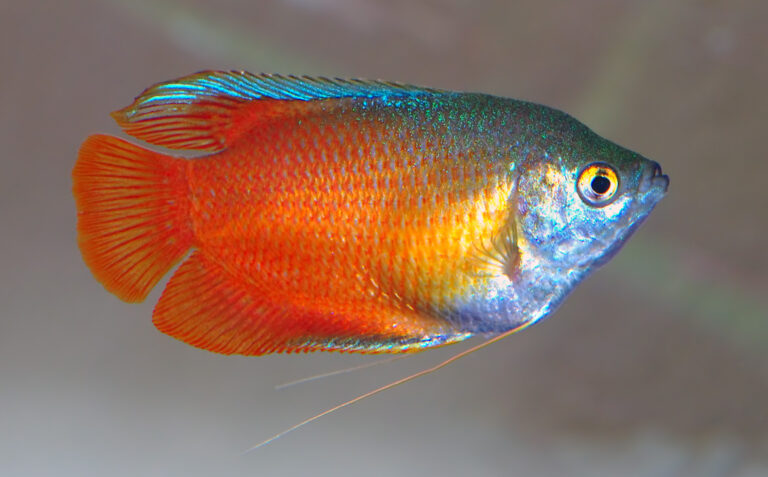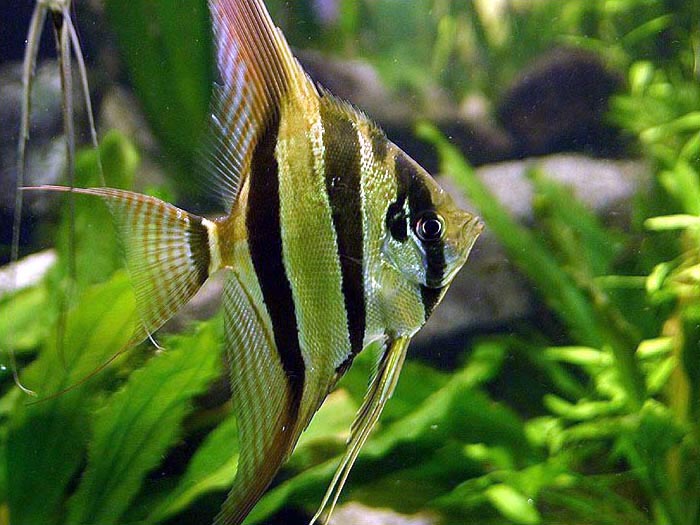Best Fishing Spots in Florida: Top Locations for 2025
By Adam Hawthorne | Last Modified: May 6, 2025
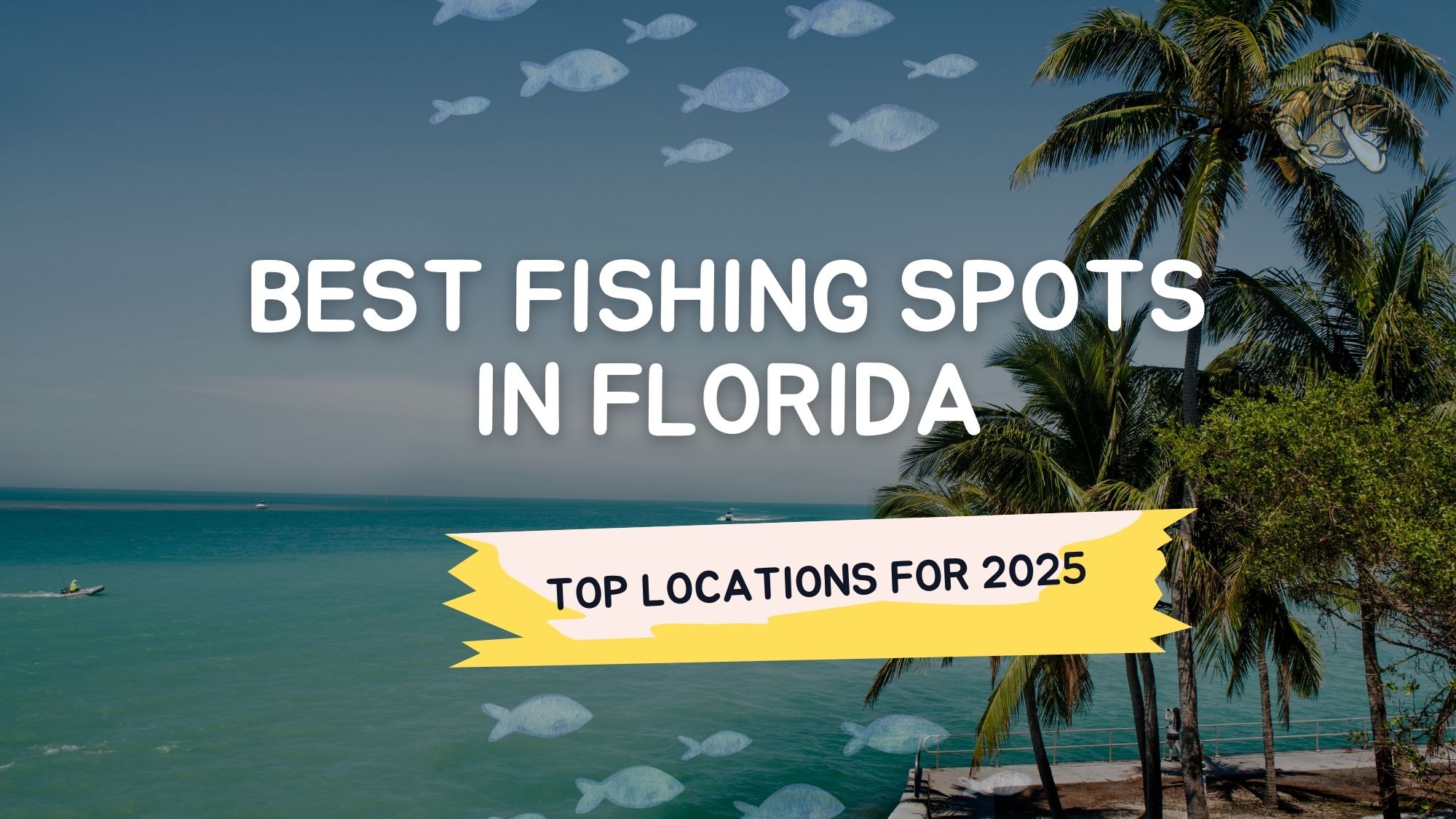
Florida’s nickname as the “Fishing Capital of the World” isn’t just clever marketing. With over 7,700 lakes, 10,550 miles of rivers, and 2,276 miles of coastline, the Sunshine State offers anglers an incredible diversity of fishing opportunities. Whether you’re targeting trophy bass in freshwater or pursuing saltwater giants offshore, Florida delivers year-round fishing that few destinations can match.
Best Fishing Spots in Florida for Every Angler
After fishing these waters for decades, I’ve discovered that Florida’s best fishing spots vary dramatically by region, season, and target species. From the Panhandle to the Keys, each area offers unique fishing experiences that can satisfy beginners and seasoned anglers alike.
Here’s my carefully curated list of Florida’s top fishing destinations for 2025, based on recent fishing reports, seasonal patterns, and firsthand experience.
1. Lake Okeechobee – Freshwater Paradise
The “Big O” remains Florida’s premier largemouth bass fishery and one of the most productive lakes in the country. At 730 square miles, this massive natural lake creates an ecosystem where trophy bass thrive.
Why it’s exceptional:
- Consistent bass production with frequent catches in the 5-10 pound range
- Diverse fishing environments from open water to thick vegetation
- Year-round fishing opportunities with peak season from December through April
- Excellent speckled perch (crappie) fishing during cooler months
The most productive areas change seasonally, but the northwestern quadrant near Lakeport and Harney Pond Canal has been particularly hot in recent months. For the best experience, target the edges of hydrilla beds and lily pad fields during early morning hours when bass are most active.
According to the Florida Fish and Wildlife Conservation Commission’s latest fish population surveys, Lake Okeechobee’s bass population has shown strong recovery following past algae blooms, making it a top choice for 2025.
Local tip: Hire a guide for your first trip – the lake’s vastness can be overwhelming. Roland Martin’s Marina & Resort offers reliable guide services that can significantly shorten your learning curve.
2. Tampa Bay – Inshore Slam Opportunities
Tampa Bay’s extensive estuary system creates perfect conditions for inshore fishing. The area’s mix of mangrove shorelines, grass flats, and deeper channels hosts an impressive variety of gamefish.
Why it’s exceptional:
- Prime habitat for snook, redfish, and trout (the coveted “inshore slam”)
- Accessible fishing from shore, wade fishing, or small boats
- Protected waters make it fishable even on windy days
- Year-round opportunities with different species peaking seasonally
The lower bay areas around Fort De Soto Park and the Sunshine Skyway Bridge have been particularly productive for snook and mackerel. When targeting redfish, focus on the upper bay’s shallow flats during rising tides when these copper-colored predators push into skinny water to feed.
A comprehensive study from the University of South Florida’s Marine Science department confirms that Tampa Bay’s water quality improvements have significantly boosted fish populations over the past decade.
Seasonal advantage: During summer, target mangrove shorelines during early morning or evening for explosive snook action. In winter, deeper channels and holes hold concentrations of fish seeking warmer water.
3. The Florida Keys – Flats, Reefs, and Offshore Action
The Florida Keys offer perhaps the most diverse fishing opportunities in the state, if not the country. This chain of islands separates the Atlantic Ocean from the Gulf of Mexico, creating multiple distinct fishing environments within short distances.
Why it’s exceptional:
- World-class flats fishing for bonefish, permit, and tarpon
- Productive reef systems holding snapper and grouper
- Offshore opportunities for sailfish, mahi-mahi, and tuna
- Technical fishing challenges that reward skill and patience
Key West Harbor and the surrounding flats have been delivering exceptional permit fishing in recent months, while the Marathon area continues to produce consistent tarpon action during their migration periods.
The reef systems surrounding the Keys hold abundant snapper and grouper. According to data from NOAA Fisheries, proper management has helped maintain healthy populations of these popular food fish despite heavy fishing pressure.
When to go: While the Keys offer year-round fishing, April through June provides the best chance to complete the coveted “flats grand slam” (bonefish, permit, and tarpon in the same day).
4. Mosquito Lagoon – Sight Fishing Heaven
Often called the “Redfish Capital of the World,” Mosquito Lagoon’s clear, shallow waters create the perfect environment for sight fishing – visually spotting fish before casting. The lagoon’s extensive seagrass beds and isolated location have created a fishery unlike any other in Florida.
Why it’s exceptional:
- Incredible sight fishing opportunities for redfish and black drum
- Trophy-sized “bull” redfish that often exceed 30 inches
- Relatively light fishing pressure compared to other inshore areas
- Technical poling and sight casting challenges that many anglers love
The northern sections of the lagoon have been particularly productive lately, with schools of redfish frequently spotted tailing in shallow water during low light conditions.
Mosquito Lagoon forms part of the Merritt Island National Wildlife Refuge, and research from the University of Central Florida indicates that these protected waters continue to support healthy gamefish populations despite increasing fishing pressure.
Technique tip: Success here requires stealth and precision. Use a push pole or trolling motor on the lowest setting to avoid spooking fish. Long, accurate casts with light tackle produce the best results.
5. Destin – Emerald Coast Gem
Destin’s unique geography provides access to both inshore and offshore fishing within a short distance. Known as “The World’s Luckiest Fishing Village,” Destin’s close proximity to the continental shelf means deepwater fishing opportunities are available within a relatively short boat ride.
Why it’s exceptional:
- Diverse fishing options from inshore bays to offshore reefs
- Access to the largest charter fishing fleet in Florida
- Consistent action for red snapper, grouper, amberjack, and king mackerel
- Choctawhatchee Bay provides protected water fishing during rough offshore conditions
The East Pass area has been particularly productive for multiple species, while artificial reefs within 10-20 miles of shore consistently hold impressive concentrations of bottom fish.
According to statistics from the Destin Fishing Rodeo, one of the oldest fishing tournaments in Florida, angler success rates in this area remain exceptionally high compared to other Gulf Coast destinations.
Seasonal highlight: October brings the famous “fall run” of king mackerel, with fish exceeding 40 pounds not uncommon. This coincides with the Destin Fishing Rodeo, making it an exciting time to visit.
6. Everglades National Park – Backcountry Wilderness
The mangrove maze of Everglades National Park represents one of the last truly wild fishing experiences in Florida. This vast wetland ecosystem harbors incredible biodiversity and provides habitat for numerous gamefish species.
Why it’s exceptional:
- Remote, pristine fishing areas with light pressure
- Opportunities for snook, redfish, tarpon, and numerous other species
- Chance to combine fishing with unique wildlife viewing
- Challenging navigation that rewards exploration and knowledge
The areas around Flamingo and Whitewater Bay have been particularly productive for snook and juvenile tarpon in recent months. During winter, focus on deeper creeks and holes where fish concentrate in cooler weather.
The protection of this ecosystem as a national park has helped maintain water quality and habitat. Research from Everglades Foundation shows that despite environmental challenges, the park continues to support robust fisheries.
Navigation warning: GPS and detailed charts are essential here. The maze-like mangrove systems can be disorienting even for experienced anglers. Rising water levels due to restoration efforts have changed some traditional fishing areas, so updated information is crucial.
7. St. Johns River – Historic Bass Waters
The northward-flowing St. Johns River system provides some of Florida’s most consistent freshwater fishing. This ancient river and its connected lakes offer diverse habitats for largemouth bass, crappie, and numerous other species.
Why it’s exceptional:
- Trophy largemouth bass opportunities throughout the system
- Excellent crappie fishing during cooler months
- Diverse environments from spring-fed creeks to expansive lakes
- Less fishing pressure than South Florida bass destinations
The river sections near Astor and the connecting Rodman Reservoir have been particularly hot spots for trophy bass recently. During summer, focus on drop-offs and deeper holes where bass seek cooler water.
According to Bass Online, a leading Florida guide service, the St. Johns River system continues to produce some of the state’s largest bass catches each year, with consistent 10+ pound fish reported.
Seasonal pattern: During winter, focus on shallow flats on sunny afternoons when bass move up to warm themselves. In summer, target deeper structure, especially during mid-day heat.
8. Sebastian Inlet – Coastal Fishing Hotspot
The meeting point of the Indian River Lagoon and the Atlantic Ocean creates a fishing environment where powerful currents concentrate baitfish and attract predators. This natural funnel effect makes Sebastian Inlet one of Florida’s most reliable shore fishing locations.
Why it’s exceptional:
- Excellent land-based fishing opportunities
- Consistent action for snook, redfish, and flounder
- Seasonal runs of Spanish mackerel, bluefish, and pompano
- Strong currents create challenging but rewarding conditions
The north jetty has been particularly productive during incoming tides, while the tip of the south jetty produces well during outgoing water movement. The surrounding flats also offer excellent wade fishing during moderate tides.
Based on catch data from the Sebastian Inlet District, this area maintains strong fish populations despite heavy fishing pressure, thanks to effective management and natural productivity.
Technique tip: When fishing the inlet’s strong currents, use slightly heavier tackle than you might elsewhere. The combination of current and structure demands equipment that can handle fish quickly before they reach danger zones.
9. Biscayne Bay – Urban Fishing Excellence
Just minutes from downtown Miami lies Biscayne Bay, one of the most accessible yet productive urban fisheries in America. This vast, shallow estuary offers excellent fishing without requiring long travel times from major population centers.
Why it’s exceptional:
- Incredible flats fishing for bonefish and permit
- Productive channels and bridges for tarpon and snapper
- Accessible by small boats, kayaks, or even shore in some areas
- Year-round opportunities with different species peaking seasonally
The flats near Key Biscayne have been particularly productive for bonefish in recent months, while the deeper channels near Government Cut consistently hold tarpon and snapper.
Research from the Bonefish & Tarpon Trust indicates that despite urban development pressures, Biscayne Bay continues to support healthy gamefish populations in areas where seagrass habitats remain intact.
Conservation note: Catch and release is strongly encouraged for bonefish, permit, and tarpon in this area to help maintain healthy populations near such a major urban center.
10. Apalachicola Bay – Natural Bounty
The Apalachicola River feeds into this productive bay, creating one of the most natural and unspoiled estuaries in Florida. The nutrient-rich waters support incredible biodiversity and provide habitat for numerous popular gamefish.
Why it’s exceptional:
- Excellent redfish fishing throughout the bay system
- Productive oyster bars that concentrate fish
- Low fishing pressure compared to more developed areas
- Quaint fishing villages and authentic Old Florida atmosphere
The grass flats near St. George Island have been particularly productive for spotted seatrout recently, while the East Bay area consistently produces quality redfish action.
According to Florida State University’s Coastal and Marine Laboratory, despite facing challenges from reduced freshwater flow, Apalachicola Bay remains one of Florida’s most productive natural estuaries.
Local tradition: Consider hiring a local guide who uses traditional wooden skiffs to pole across the flats – these guides often have generations of knowledge about this unique ecosystem.
Seasonal Fishing Calendar for Florida
Florida’s fishing patterns change significantly throughout the year. Here’s when to target specific locations for peak action:
Winter (December-February)
- Lake Okeechobee: Prime bass fishing as fish move to spawning areas
- Everglades: Snook concentrate in deeper creeks and holes
- Keys: Perfect weather conditions for reef fishing
- Tampa Bay: Sheepshead gather around bridge pilings and docks
Spring (March-May)
- Sebastian Inlet: Spanish mackerel and bluefish runs
- Keys: Tarpon migration begins, peak permit fishing
- Mosquito Lagoon: Redfish become more active on flats
- St. Johns River: Bass spawn in shallow waters
Summer (June-August)
- Destin: Offshore pelagic species move within range
- Biscayne Bay: Early morning bonefish flats fishing
- Tampa Bay: Mangrove shorelines produce excellent snook action
- Apalachicola: Redfish gather on shallow flats during high tide
Fall (September-November)
- Destin: King mackerel “fall run”
- Keys: Reef fishing peaks as water temperatures moderate
- Lake Okeechobee: Bass move to edges of vegetation
- Sebastian Inlet: Flounder migration peaks
Equipment Considerations for Florida Fishing
Florida’s diverse fishing environments require versatile equipment setups:
Inshore/Flats Fishing
- 7′ to 7’6″ medium-light spinning rods
- 2500-3000 size reels
- 10-15 lb braided line with 20-30 lb fluorocarbon leader
- Artificial lures: soft plastic jerkbaits, weedless spoons, topwater plugs
- Live bait: pilchards, pinfish, shrimp
Freshwater Bass Fishing
- 7′ medium to medium-heavy baitcasting or spinning rods
- 2500-3000 size spinning reels or appropriate baitcasters
- 15-20 lb braided line with 15-25 lb fluorocarbon leader
- Artificial lures: plastic worms, swimbaits, topwater frogs
- Live bait: wild shiners produce biggest bass
Offshore/Reef Fishing
- 7′ to 7’6″ heavy spinning or conventional rods
- 5000+ size spinning reels or appropriate conventional reels
- 30-50 lb braided line with 40-60 lb fluorocarbon leader
- Artificial lures: heavy jigs, speed jigs, trolling plugs
- Live bait: pilchards, pinfish, mullet
When shopping for equipment, Bass Pro Shops and similar retailers offer fishing tackle specifically designed for Florida conditions, often with staff who can provide local knowledge.
Florida Fishing Regulations and Conservation
Florida’s fishing regulations vary by region and species. Before heading out:
- Obtain appropriate licenses from the Florida Fish and Wildlife Conservation Commission
- Check size and bag limits for your target species
- Be aware of seasonal closures and protected areas
- Consider using circle hooks for better release survival
- Practice proper catch and release techniques
The health of Florida’s fisheries depends on conservation-minded anglers. I’ve noticed that handling fish minimally and using proper release techniques significantly improves their survival rates. While measuring a trophy fish, keep it in the water as much as possible and support its weight horizontally.
Tips for Successful Florida Fishing
After countless hours on Florida waters, I’ve learned these fundamental principles:
- Fish moving water: Tidal changes or current seams almost always improve action
- Go early or late: The first and last hours of daylight typically produce best results
- Watch the weather: Florida fish are sensitive to frontal systems
- Match local forage: Use baits that imitate what’s naturally available
- Stay mobile: Don’t hesitate to change locations if action is slow
- Check tides and moon phases: These factors significantly impact fish behavior
The most successful anglers I’ve met in Florida are those who adapt quickly to changing conditions rather than sticking to a rigid plan.
Budget-Friendly Florida Fishing Options
Not every great Florida fishing experience requires expensive charters or boats:
Shore Fishing Locations:
- Sunshine Skyway Bridge Fishing Pier (Tampa Bay)
- Navarre Beach Fishing Pier (Panhandle)
- Sebastian Inlet State Park (East Coast)
- Fort Pickens Pier (Pensacola)
Kayak Fishing Hotspots:
- Merritt Island National Wildlife Refuge
- Tomoka Basin (Ormond Beach)
- Indian River Lagoon system
- Shell Creek (Charlotte County)
The Florida Paddling Trails Association provides excellent resources for kayak anglers, including launch sites and suggested routes through prime fishing areas.
FAQ: Florida Fishing Spots
When is the best time of year to fish in Florida?
Florida offers year-round fishing, but different seasons favor different species. Spring (March-May) generally provides the most consistent action across species, with pleasant weather and active fish. However, winter offers excellent bass fishing in South Florida, while fall brings strong pelagic runs along the coasts.
Do I need a fishing license to fish in Florida?
Yes, most anglers need a Florida fishing license. However, exceptions exist for Florida residents fishing from shore or a structure attached to shore (shore fishing license), children under 16, adults over 65 who are Florida residents, and on specific license-free fishing days. Visit the Florida FWC website for complete details and to purchase licenses online.
What’s the best Florida fishing spot for beginners?
Tampa Bay offers excellent beginner opportunities due to its protected waters, abundant fish, and variety of access points. Shore fishing at Fort De Soto Park or fishing the grass flats from a rental boat provides consistent action without requiring advanced techniques or knowledge.
Are there good shore fishing options in Florida?
Absolutely! Florida offers exceptional shore fishing opportunities, including fishing piers, bridges, jetties, and beach access points. Sebastian Inlet, Skyway Fishing Pier, Navarre Beach Pier, and Juno Beach Pier are among the most productive shore fishing destinations in the state.
What’s the best fishing spot in the Florida Keys?
This depends on your target species and preferred fishing style. For flats fishing, the areas around Marathon and Key West offer excellent opportunities for bonefish, permit, and tarpon. For reef fishing, the areas off Islamorada consistently produce snapper and grouper. The offshore waters throughout the Keys provide opportunities for pelagic species, with the area between Marathon and Key West being particularly productive for sailfish during winter months.
What fishing gear should I bring to Florida?
A versatile medium spinning outfit (7′ rod, 3000-size reel, 15lb braided line) handles most inshore situations. For freshwater, a medium-heavy baitcasting setup works well for bass. When targeting specific species like tarpon or offshore gamefish, heavier specialized tackle becomes necessary. Many visitors find it more practical to rent equipment from local tackle shops or use guide-provided gear.
Final Thoughts
Florida’s reputation as the “Fishing Capital of the World” is well-deserved. The state offers an incredible diversity of fishing opportunities accessible to anglers of all skill levels and interests. Whether you’re casting to tailing redfish on a pristine flat, battling offshore giants, or peacefully pursuing bass on a quiet lake, Florida has something special to offer.
The best approach to Florida fishing is to embrace its diversity and adapt to what each unique ecosystem offers. Starting with the locations listed above will put you on the right path to memorable fishing adventures throughout the Sunshine State.
What makes these spots truly “the best” isn’t just the quantity or size of fish, but the quality of the overall experience – the natural beauty, the wildlife encounters, and the memories created on the water. After all, a day fishing in Florida, regardless of catch numbers, is better than most days anywhere else.

Meet Adam Hawthorne
I’m a lifelong fishing enthusiast who’s spent years exploring rivers, lakes, and oceans with a rod in hand. At Fishing Titan, I share hands-on tips, honest gear reviews, and everything I’ve learned about fish and ocean life, so you can fish smarter and enjoy every cast.
Share:

Meet Adam Hawthorne
I’m a lifelong fishing enthusiast who’s spent years exploring rivers, lakes, and oceans with a rod in hand. At Fishing Titan, I share hands-on tips, honest gear reviews, and everything I’ve learned about fish and ocean life, so you can fish smarter and enjoy every cast.
Related Articles
-
Shore Fishing for Beginners: 5 Odd Techniques That Actually Work
I’ve spent more mornings than I can count standing on the shores of Michigan lakes watching boats drift by, their occupants giving me that slightly…
-
Why Your Red Drum Strategy Is All Wrong (Fix It Today)
Last October, I was fishing the eastern shore of Lake Michigan near Ludington with my buddy Mike. Cold front had just pushed through, water temperature…
-
Oranda Goldfish
The Oranda Goldfish (Carassius auratus) stands as one of the most distinctive and cherished varieties in the world of ornamental fishkeeping. Characterized by its prominent…
-
Serpae Tetra
The Serpae Tetra (Hyphessobrycon eques) stands as one of South America’s most recognizable freshwater aquarium species, distinguished by its vibrant red-orange coloration and distinctive black…
Fish Species
-
Crown Tail Betta
The Crown Tail Betta stands as one of aquaculture’s most distinctive ornamental fish, renowned for its dramatically elongated, spiky fins that resemble the spokes of…
-
Jaguar Cichlid
The Jaguar Cichlid stands as one of Central America’s most formidable predatory fish, renowned for its impressive size, aggressive temperament, and striking appearance. This remarkable…
-
Honey Gourami
The Honey Gourami (*Trichogaster chuna*) stands as one of the most captivating freshwater fish species in the aquarium trade, distinguished by its remarkable color-changing abilities…
-
Angelfish
Angelfish represent one of the most recognizable and ecologically significant families of marine fish, encompassing over 85 species distributed across tropical and subtropical oceans worldwide….

